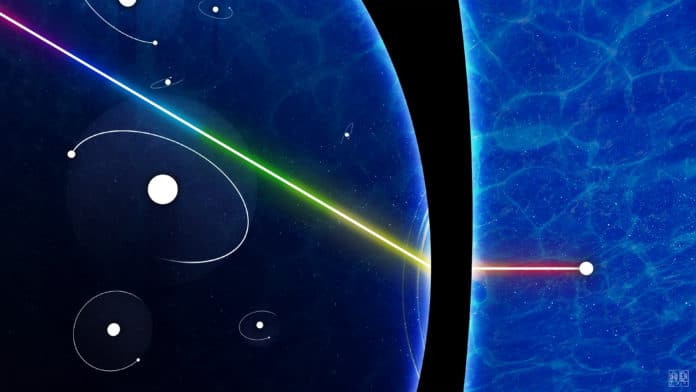In quantum tunneling, a subatomic particle passes through a potential barrier that it cannot surmount under the provision of classical mechanics.
Now, scientists at Griffith University have solved one of the great mysteries that has plagued scientists since the advent of quantum physics. Scientists have successfully measured the time a particle takes while traveling through a barrier.
At first, scientists conducted an experiment using ultrashort pulses of light and atomic hydrogen in the University’s unique laser facility, and have definitively determined the tunneling delay, which is also the time it takes for an electron to get out or ionize from a hydrogen atom.
Lead researchers Associate Professor Igor Litvinyuk and Professor Robert Sang from the Centre for Quantum Dynamics say the work answers an age-old question that “even textbooks treat as a problem to solve”.
“In the classical world, Newton’s laws of physics are what large physical bodies obey. If you lean on a wall, that wall pushes back in force so that you don’t go through it.”
“But when you go down to the microscopic level, things behave quite differently. This is where the laws of physics change from classical to quantum.”
Through the experiments at the Australian Attosecond Science Facility over three years, scientists measured the time it takes for a particle to go through that wall.
For that purpose, scientists used the simplest atom, atomic hydrogen. They found that there’s no delay in what we can measure.
Associate Professor Igor Litvinyuk said, “Now that we’ve tested this atom, we can benchmark this process with other atoms to possibly learn new physics. We know that the test atom gives us zero delays, so all other delays can be calibrated in respect to that.”
During the experiment, scientists used one of the properties of light and turned it into a ‘clock’ called an auto clock. They then send a pulse of light to interact with an H atom; it sets up the conditions so that the lone electron from that atom can tunnel through a barrier.
The light they used had 30 gigawatts of instantaneous power, which is more than the United States power grid.
Prof. Sang said, “There’s a well-defined point where we can start that interaction, and there’s a point where we know where that electron should come out if it’s instantaneous. So anything that varies from that time we know that it’s taken that long to go through the barrier. That’s how we can measure how long it takes.”
“It came out to agree with the theory within experimental uncertainty being consistent with instantaneous tunneling.”
A/Prof Litvinyuk said, “Our model used no approximations because we didn’t have to worry about electron-electron interactions.”
“Also, in one of those experiments, they measured the relative time delay between two species of atoms and not the time delay for a single atom.”
Prof Sang said, “There were 1000 light pulses per second fired at the hydrogen atom, which means for every millisecond there is one very short light pulse.”
“If I stretched the light pulse to be one second long, I’d have to wait 50,000 years until the next pulse of light came through.”
“So they’re very short and they’re very intense. We know the tunneling time must be less than 1.8 attoseconds – which is a billionth of a second.”
“It’s hard to appreciate how short that is, but it takes an electron about a hundred attoseconds to orbit a nucleus in an atom.”
Journal Reference
- Sainadh, U. S., Xu, H., Wang, X., Wallace, W. C., Douguet, N., Bray, A., Ivanov, I., Bartschat, K., Kheifets, A., Sang, R. T., & Litvinyuk, I. V. (2019). Attosecond angular streaking and tunnelling time in atomic hydrogen. Nature, 568(7750), 75-77. DOI: 10.1038/s41586-019-1028-3
